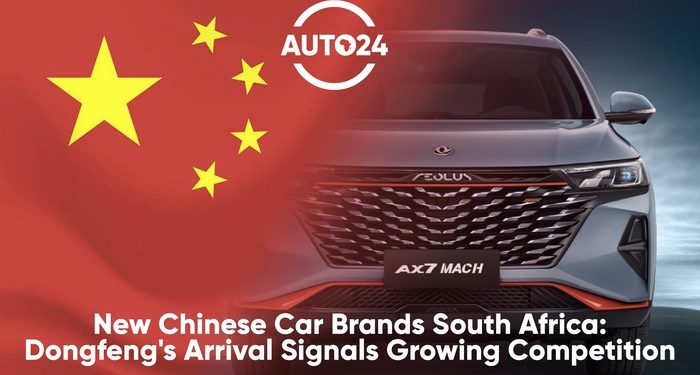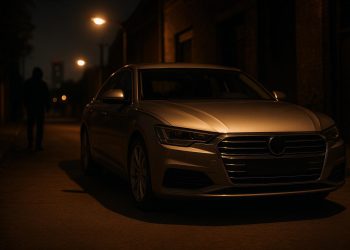The Chinese Automotive Revolution Reaches SA
South Africa’s automotive landscape is undergoing a transformation. As vehicle prices rise and consumer demand shifts toward value-driven options, Chinese automakers are stepping in to fill the gap. The latest player to make its move? Dongfeng Motor Corporation—one of China’s oldest and largest vehicle manufacturers.
As Dongfeng prepares to enter the South African market, its arrival signals more than just the launch of another new badge. It reflects a broader trend: the accelerating momentum of Chinese car brands in South Africa, a market historically dominated by European, Japanese, and Korean manufacturers.
This article explores how Dongfeng’s entry contributes to a changing competitive environment, the broader impact of Chinese automotive innovation, and what it all means for South African car buyers.
The Rise of Chinese Auto Brands in South Africa
Over the past decade, Chinese automotive brands have slowly built credibility and market share across South Africa. Starting with early entrants like Chery, GWM, and Haval, these manufacturers initially faced skepticism. But with time, they’ve addressed quality concerns, refined their offerings, and invested heavily in after-sales support.
Today, brands like Haval (a GWM sub-brand) have become household names. Haval’s H6 and Jolion are now regular sights on South African roads, winning over customers with modern design, generous features, and competitive pricing.
Dongfeng’s entry adds another heavyweight to this Chinese contingent. Ranked among China’s top four carmakers, Dongfeng produces vehicles for both local and global markets, with partnerships including Nissan, Honda, and Peugeot.
Who Is Dongfeng? A Global Automotive Powerhouse
Dongfeng Motor Corporation is a state-owned enterprise founded in 1969 and headquartered in Wuhan, China. It is one of the most diversified automotive manufacturers in the world, producing everything from compact city cars to commercial trucks and buses.
In 2023, Dongfeng’s global production topped 2.2 million vehicles, with a strong emphasis on electric and hybrid development. The company has a long-standing reputation in Asia and Europe and is now leveraging that experience to target emerging markets.
South Africa represents an exciting new chapter for Dongfeng. While specific models for local launch have not been officially confirmed, industry sources suggest a mix of SUVs and EVs is on the cards.
Why South Africa—and Why Now?
Several key factors make South Africa an attractive market for Dongfeng:
- Growing Demand for Affordable Vehicles: With inflation and fuel costs climbing, South African consumers are actively seeking budget-friendly alternatives that still offer safety, features, and reliability.
- EV Incentives on the Horizon: As the South African government explores incentives for electric vehicle adoption, brands with existing EV portfolios are eyeing early entry. Dongfeng’s EV lineup positions it well to benefit.
- Market Maturity: South Africa offers a mature auto sales network and a diverse consumer base, making it a strong testing ground for Chinese brands looking to expand further across Africa.
- Proven Predecessors: The success of GWM, Haval, Chery, and BAIC has paved the way for newer entrants like Dongfeng to capitalize on increased brand openness.
Dongfeng’s Expected Vehicle Lineup in South Africa
While final model confirmations are pending, based on Dongfeng’s current global lineup, here are a few strong contenders that may debut locally:
- Fengon ix5 – A mid-size fastback SUV offering sporty design and turbocharged engines.
- Aeolus Yixuan – A compact sedan positioned as an affordable yet premium daily driver.
- Seres 3 – A small electric SUV designed for urban commuting with competitive range and charging capabilities.
- Rich 6 Pickup – A rugged bakkie option targeted at the lifestyle and commercial sectors.
Each model reflects a blend of modern styling, feature-rich interiors, and tech-forward options like panoramic displays and Level 2 driving assistance.
How Chinese Brands Are Disrupting the Market
Chinese automakers are redefining what South Africans expect from entry-level and mid-range cars. Here’s how:
- Better Specs for the Price: Compared to similarly priced European or Japanese vehicles, Chinese brands often offer more standard features—such as digital dashboards, wireless charging, and full safety suites.
- Design and Technology: Earlier stereotypes about “cheap Chinese cars” are being dismantled with the latest generation of models boasting high-quality finishes and advanced tech integrations.
- Warranties and Support: To combat buyer hesitation, Chinese brands are offering longer warranties, competitive service plans, and expanded dealer networks.
As a result, they’re winning over budget-conscious consumers and even fleet operators.
Challenges Chinese Brands Must Navigate
Despite their momentum, Chinese automakers still face several hurdles:
- Brand Recognition: New entrants like Dongfeng will need to invest in marketing and dealer presence to gain visibility.
- Perceived Quality: While build quality has improved significantly, lingering perceptions about reliability persist.
- Resale Value: Due to their newness in the market, Chinese cars often have lower resale value compared to legacy brands.
- Servicing Infrastructure: Ensuring nationwide availability of parts and certified technicians remains a work in progress for some brands.
To counter these, Dongfeng will likely adopt aggressive pricing, nationwide service partnerships, and bundled value offers.
Implications for South African Car Buyers
For consumers, the arrival of Dongfeng means more choice, greater competition, and—potentially—lower prices across the board. As traditional brands scramble to keep up, buyers stand to benefit from:
- Enhanced value-for-money
- Pressure on legacy brands to improve feature offerings
- Better deals through price competition
- Accelerated EV adoption
Whether you’re looking for a family SUV, a reliable runaround, or an affordable EV, Chinese brands now offer credible alternatives to traditional market leaders.
Conclusion: A Growing Chinese Wave in South Africa’s Automotive Future
Dongfeng’s entry into South Africa marks a critical moment in the country’s automotive evolution. As Chinese automakers continue to refine their offerings and expand support infrastructure, their presence will only grow stronger.
What started as a trickle with early imports has become a powerful wave. With brands like Haval, Chery, and now Dongfeng leading the charge, South Africa’s automotive market is entering a new era—one where affordability, technology, and innovation go hand in hand.
For buyers, this means more choices, smarter spending, and a chance to experience the new face of mobility.





